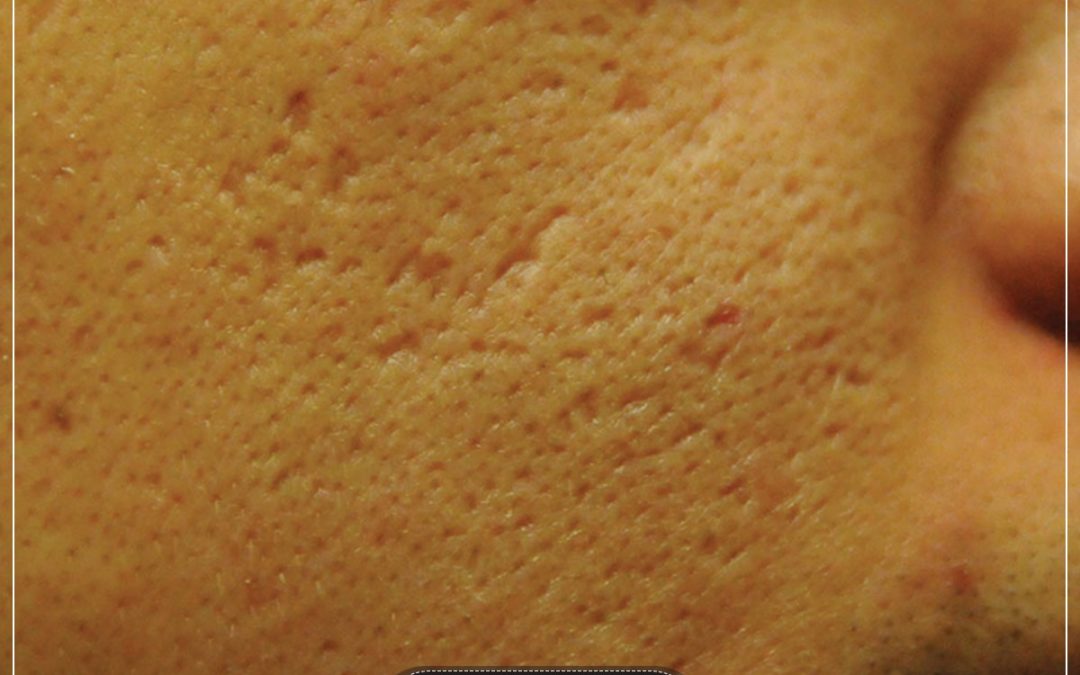
Ice Pick Scars
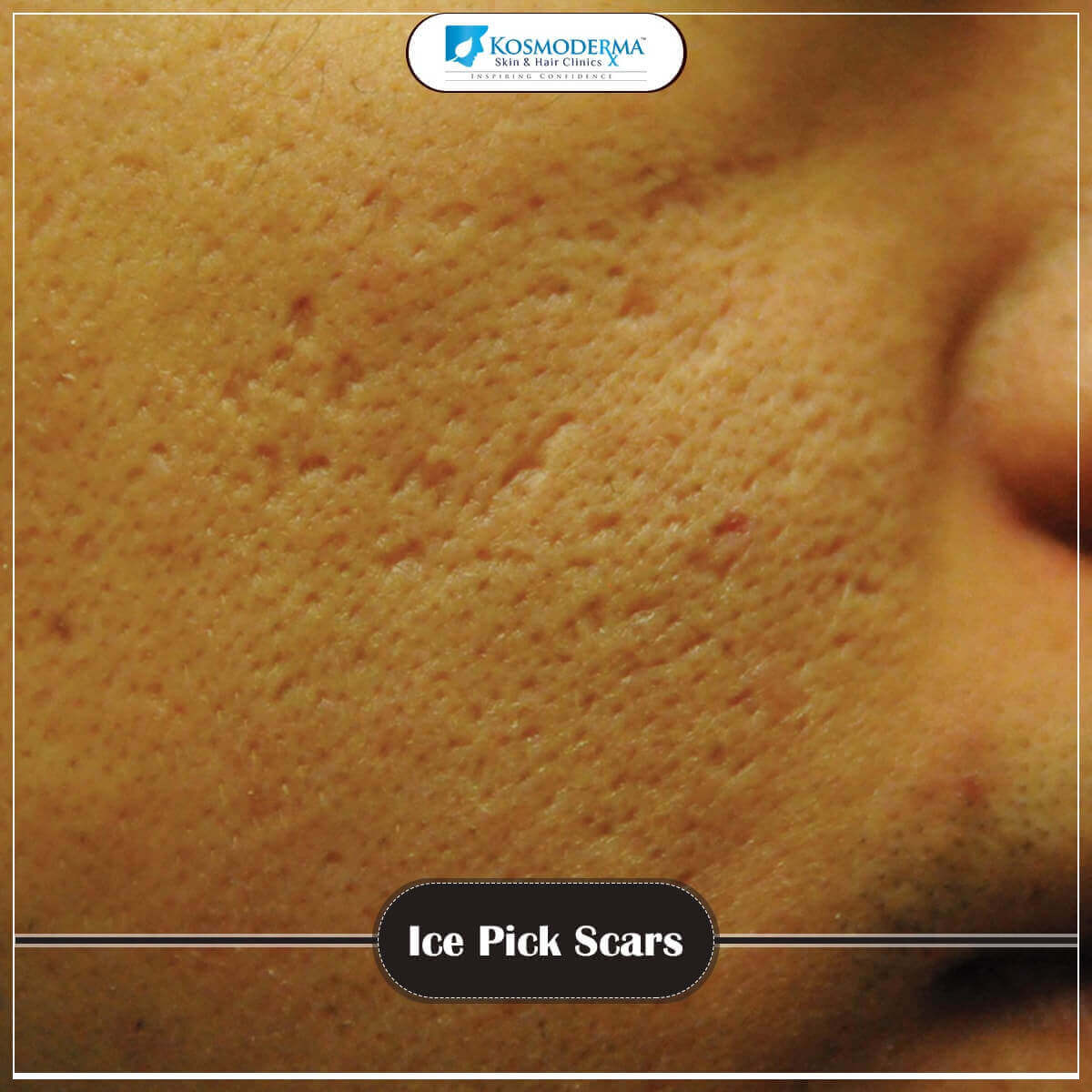
These are deep narrow scars giving the look as if something sharp pierced the skin. They usually develop after a cystic infection or deep inflammation which works its way to the surface. An atrophic scar, it is marked by the destruction of the skin tissue leaving a slender column like scar.
Ice pick scars begin as comedones (referred to as blackheads or whiteheads in layman terms). These comedones if left uncleaned, block the pores and as the bacteria in it multiplies, pus starts getting formed. The pus thus, builds up pressure which takes the inflammation to the deeper layers of the skin. This inflammation damages the skin and effects the collagen formation. This loss of collagen further allows the acne inflammation to sink deeper resulting in ice pick scars.
Two of the best treatments for ice pick scars include skin needling and fractional laser treatment. These techniques can both be performed in the comfort of a skin specialist’s office.
Box Scars
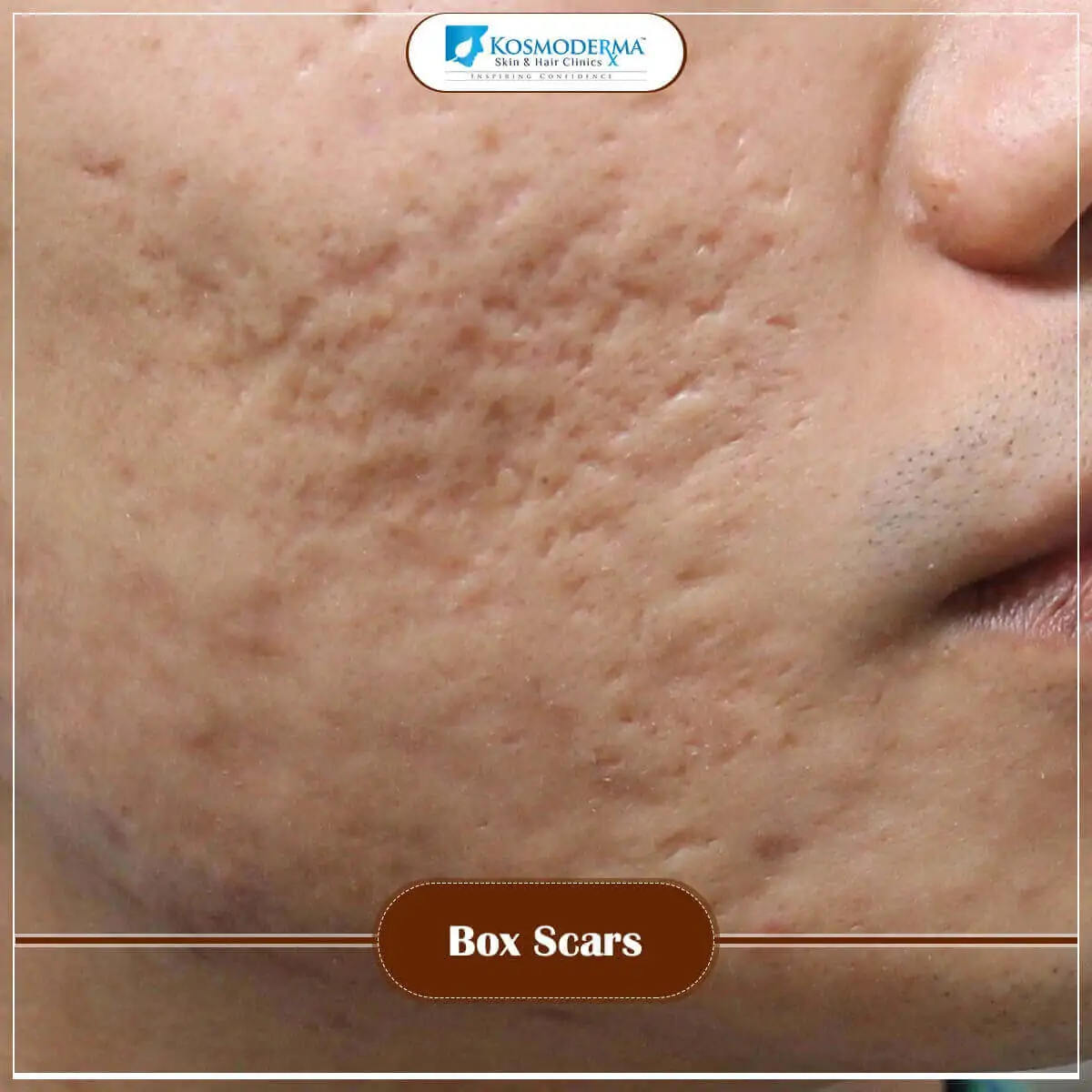
Box scars are usually round depressions with vertical sides. For easier imagination, imagine a hollow hemisphere put over a cylindrical bottle, hollow side up. They are wider than ice pick scars and give a pitted appearance to the skin. Another example of atrophic scars, these are formed when an inflammation destroys the collagen in the skin tissue. The depth of the scar varies in proportion to the tissue destruction.
Because box-scar scars have steeper edges than the other scar varieties, it is more difficult to smooth them out and blend them into the surrounding skin. Laser resurfacing, particularly ablative laser resurfacing (eg. Er:YAG, Nd:YAG, CO2) often produces good results. When box scars are too deep or resistant to laser resurfacing, plastic surgery for acne scars can provide a more targeted and permanent solution.
Rolling Scars
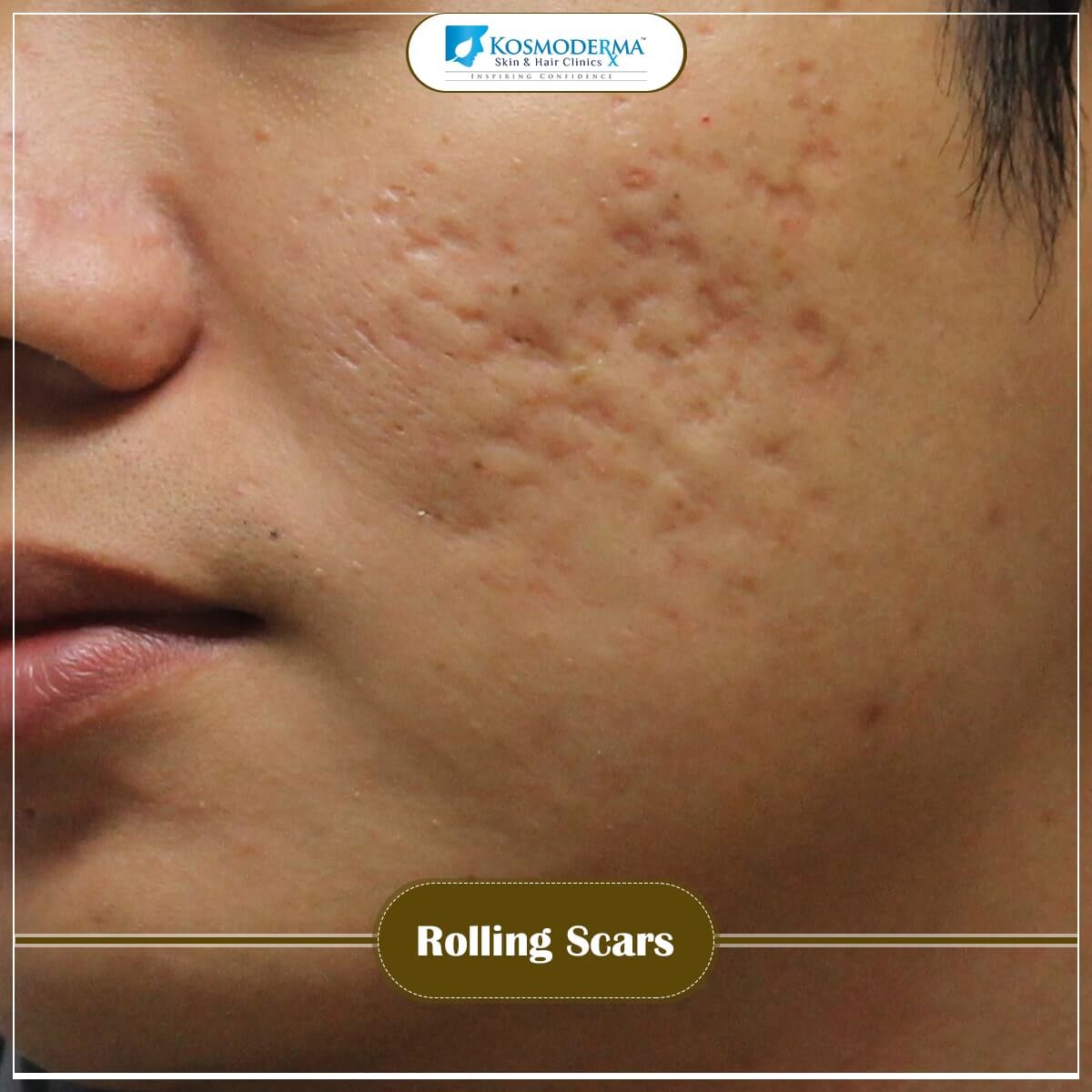
Rolling scars which appear as wavelike undulations on the skin are caused when fibrous bands of tissue develop between the skin and subcutaneous tissue below. The bands in turn pull the epidermis to the deeper structures of the skin.
Laser resurfacing (ablative and non-ablative), chemical peels, microdermabrasion, needling, subcision and even red light phototherapy can produce significant results in case of rolling scars.
Keloid Scars
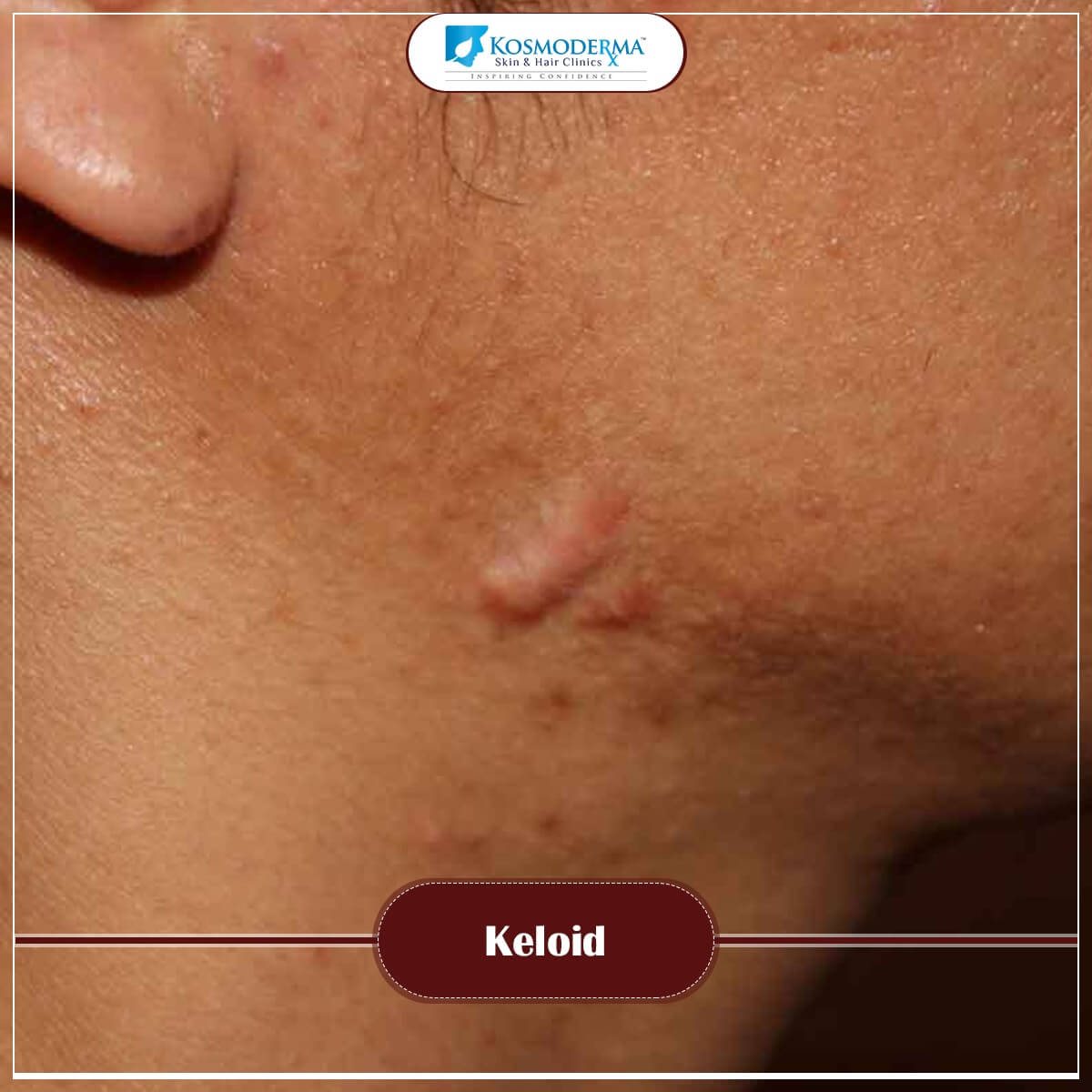
When scar tissue forms in great excess, it can become a large nodule of dense, rubbery scar tissue that is known as a keloid. The development of hypertrophic and keloid scars is less common in acne patients than the development of depressed scars. A number of factors can potentially be involved in the process, including acne severity and duration, genetics and secondary infections.
Ablative laser resurfacing and microdermabrasion can produce satisfactory results in case of keloidal scars. Keloidal scars can also be surgically removed but are generally less responsive to treatments like chemical peels, because the scar tissue is much more resistant to the ingredients in a chemical peel than healthy tissue.
Discoloration and Pigmentation Scars Discoloration of skin is a natural response of the skin to the inflammation caused on account of acne. It usually appears as colored patches ranging from pink to red, brown or black depending upon the skin tone and depth of discoloration. In many cases, this discoloration usually fades with time however, in some cases medical intervention is required.
Hyper-pigmentation occurs when melanocytes begin to proliferate at the site of injury, or when an existing population of melanocytes begins to produce excess amounts of melanin. Hyper-pigmentation is often treated with light and laser treatments that specifically target melanin, such as KTP Lasers, Pulsed Dye Lasers (PDL), and Intense Pulsed Light (IPL) therapy.
Hypo-pigmentation occurs when melanocytes are depleted from the injury site or lose their ability to produce melanin. This is often the case in areas of skin that have been replaced with scar tissue, which tends to have a light, pinkish appearance. Hypo-pigmentation is generally more noticeable in those individuals with darker base skin tones.
That was all we had to share for now. Any additional information, well we will have another blog for that.
Hope you had a happy and useful reading!
Keep Shining!
Kosmoderma Skin, Hair & Lasers Clinics are dedicated to medical excellence in the field of Cosmetic Dermatology with international accreditation and facilities.
We offer scientifically proven treatments using US FDA approved technology. All our products have undergone extensive research and trials in USA, Europe and India. We pride ourselves in offering safe, effective and affordable treatments with high standards of quality. Kosmoderma gives personalized consults with skin care and uses facial analyzer and 3D imaging of the skin to analyze and personalize the treatments and skin regimen.
 Whatsapp: 7676757575
Whatsapp: 7676757575 


